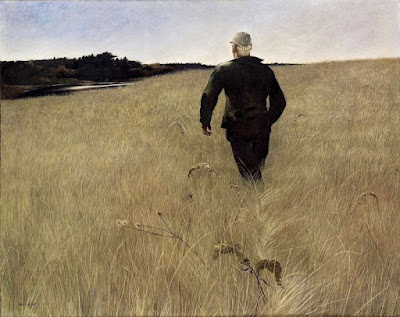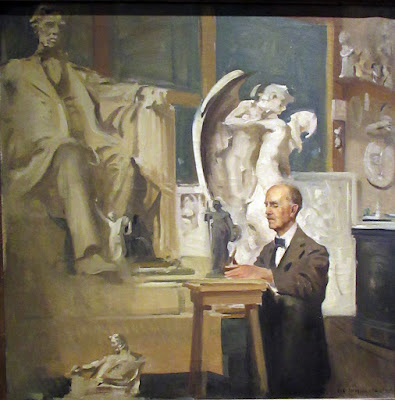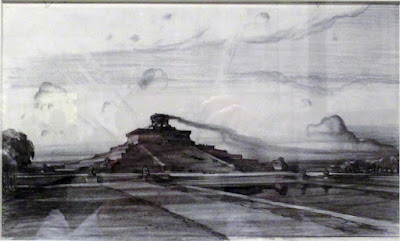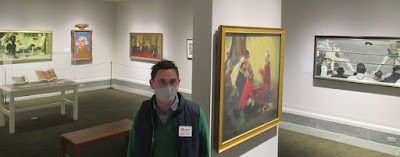Tuesday, May 31, 2022
Closeups of Animal Eyes
Monday, May 30, 2022
Why Are Reflections of Bright Lights So Elongated?

She continues: "I am trying to understand two things:
1. why is the light that is reflected in the pond so elongated compared to the reflection of the trees?
2. why does the reflected light go straight down (rather than away or towards a vanishing point if that makes sense)?"
He explains the elongation of the reflection of the buildings by setting up a series of mirrors to represent the far wavelets, and then tilting them toward and away from the observer. Since the area they reflect shifts vertically, they have the effect of stretching the reflected image straight downward.
Sunday, May 29, 2022
Brass Band
Saturday, May 28, 2022
Setting Up the Sketch Easel
Here's a video showing the quick setup of the sketch easel.
Some of the items mentioned:
Tripod
Pentalic watercolor sketchbook
Water cup
Richeson travel brush set
Video tutorial: How to Make a Sketch Easel
Facebook group: Sketch Easel Builders
Friday, May 27, 2022
Chromostereopsis
Chromostereopsis is a depth illusion where intense warm vs. cool colors appear to sit on different planes relative to the viewer.
In the illusion above, it appears to my eye that the red is a little lower or farther away. But others report the opposite effect, and some people don't see any depth illusion.
Mindhacks explains that "red and blue are at opposite ends of the light spectrum," and as a result, "different wavelengths of light will be focussed differently on the back of the eyes. This may also be why some people report that their glasses intensify the effect."
More at Mindhacks
Thanks, Ron Harris
Thursday, May 26, 2022
Our Mythical Hope
Katarzyna Marciniak, who is on the faculty of the University of Warsaw, has edited a hopeful book about how myths and legends can provide inspiration and solace in the life of children.
The online book is available for free at this link.
Wednesday, May 25, 2022
The Horse Pictures of Eduard Thöny
Eduard Thöny (1866-1950) was known for his excellent draftsmanship.
He loved to include equestrian subjects and often put his horses in dramatic action poses.
See more examples of Eduard Thöny on Wikimedia Commons. (1866-1950)
Previous post on Eduard Thony's Caricatures
Detailed German Wikipedia entry about Eduard Thöny.
Tuesday, May 24, 2022
The Real Face Behind the Legend
Monday, May 23, 2022
Models and Costumes for Dinosaur Boulevard
The kid rolling the Hula Hoop across the parking lot was a neighbor wearing a castoff opera costume.
We made the robe for the Stegosaurus traffic helper out of muslin, and we painted black and red diamonds on it with acrylic paint.
Our store has got some large, luscious art prints of Dinosaur Boulevard that you can frame and hang up in your place of honor to proclaim yourself as a true Dinotopian.
Sunday, May 22, 2022
How Oberhardt Achieved a Speaking Likeness
William Oberhardt (American, 1882-1958) was known for his charcoal portraits, always drawn from life, always of men.
How did he achieve such convincing likenesses, where the subject seems animated and on the verge of speech?
The answer is that he engaged his subjects in a spirited conversation. He wanted to make sure that the sitter had a delightful experience, and he tried to bring out their best in the conversation.
Most of his drawings were achieved within an hour. After laying out the overall gesture he would focus on completing the eyes early in the process, because he knew he needed to get them right or the whole effort would be futile and he would have to start over.
Sidney Dickinson by William Oberhardt
To convey an individual likeness, he focused on the unique attributes of the person's face. He preferred to portray celebrities because "they are free from the inhibitions that the average man is heir to. The celebrity usually realizes that lines, plans, and wrinkles cannot be removed without loss of individuality, the individuality that has made him prominent...The trouble is that some people don't like their own faces. When that happens, I admit, the cards are stacked against you. No matter how much of the milk of human kindness you mix with your pictorial effort, you're fighting a losing game because a portraitist cannot redesign a face and still preserve a likeness."
The new issue of Illustration Magazine has a 23 page article with dozens of examples of Oberhardt's portraits, both in charcoal and oil, together with many notes about his process, including extended excerpts from several articles by Oberhardt himself.Saturday, May 21, 2022
Friday, May 20, 2022
Is Opera Rose Fugitive?
Is the pigment called opera rose lightfast or fugitive? I had always heard it was extremely fugitive, but experts don't agree.
Opera rose is a quinacridone pigment defined as PR122. According to the authoritative website Handprint, it's very reliable. In fact Handprint rates it as a "Top 40" pigment. They say: "after 800+ hours of sunlight exposure, the samples show no fading or discoloration."
Here's how they explain it:
"Quinacridone magenta PR122 is a lightfast, semitransparent, staining, dark valued, intense violet red pigment, offered by more than 20 pigment manufacturers worldwide. The ASTM (in technical report D5067-99) rates the lightfastness of PR122 in watercolors as "fair" (III, "may be satisfactory when used full strength or with extra protection from exposure to light"), but other manufacturer and independent tests rate it higher. My 2004 lightfastness tests of the nine paint brands listed above, which show color variations that suggest several different pigment particle sizes or pigment suppliers, revealed very little or no color degradation, after 800+ hours of direct sunlight exposure, in both heavy and diluted applications. This puts the pigment solidly in the "excellent" (I) category (BWS 7+)."
"For context, compare these samples to naphthol red (PR170), a pigment with a well established "very good (II)" rating, or with quinacridone rose (PV19), which is considered to have "excellent (I)" lightfastness. This is such a glaring discrepancy that the ASTM test must be flawed or unrepresentative in some way. Because Michael Wilcox relies on the ASTM documents for his pigment ratings, he has been critical of this pigment without any corroborating evidence of its fallability. I suggest you do your own lightfastness test on PR122 paints until a consensus emerges, but at present I see absolutely no reason to avoid this splendid pigment."
Thursday, May 19, 2022
Painting Peonies at NYBG
Wednesday, May 18, 2022
The Kitchen by Carl Larsson
Tuesday, May 17, 2022
Signing with a Paint Bottle
Impressionist Lisa Palombo signs her paintings with acrylic paint in bottles.
She says: "I use a variety of bottles like this one and fill with acrylic paint that is watered down. Sometimes I drip and splatter with them too."Monday, May 16, 2022
An Artist in His Studio
---
Books:
Charles Bargue and Jean-Léon Gérôme
The Lure of Paris: Nineteenth-Century American Painters and Their French Teachers
Sunday, May 15, 2022
Dandelion Study

Taraxacum oficinale (dandelion) in various growth stages painted in gouache yesterday for the Plein-Air Invitational event at the New York Botanical Gardens.
Saturday, May 14, 2022
Wind in Stone
One of the joys of the art of sculpture is conveying invisible forces with the medium of solid rock.
With his sculpture "West Wind," Thomas Ridgeway Gould (American, 1818 – 1881) achieved the impression that thin fabric is stretched over a human form and blown by the wind.
"West Wind was later shown in the Philadelphia Centennial Exposition in 1876, and all told Gould subsequently made seven copies in two sizes."
Friday, May 13, 2022
Pre-Priming with a Color Blur
You can pre-prime a page with casein in a sort of abstract color blur, then make it into something.
New YouTube video: “Painting Skunk Cabbage.”
Thursday, May 12, 2022
Painting in the Swamp
Let's visit a mosquito-infested swamp to paint some skunk cabbage.
Wednesday, May 11, 2022
Drawing Daisies
A daisy a not single flower. What appears to be a flower is actually two types of flowers: a yellow disk floret at the center composed of many tiny individual flowers, and white petal-like florets arranged radially.
When drawing buttercups and daisies it helps to lightly draw both ellipses, with the stem coming up to the center.
---
Diagram is from Drawing Made Easy, a book that I recommend for beginning artists, available from my store.
Tuesday, May 10, 2022
Leyendecker's "First Long Suit"
One of the original paintings for sale in today's Heritage Auction of American art is First Long Suit by J.C. Leyendecker.
Heritage Auction of American art is today, May 10. The auction includes J.C. Leyendecker, Maurice Sendak, N.C. Wyeth, Norman Rockwell, and Maynard Dixon.
Thanks, Meagan McMillan
Monday, May 9, 2022
Taking the Right Advice
"'When he left, [Andrew's wife] Betsy told him, ‘Don’t listen to him, he’s wrong,’ ” Jamie Wyeth said. “The father, N.C., was worried that his son wouldn’t be able to sell a painting like that, but he completely missed what his son was doing, and Betsy, at that young age, realized what he was doing – a lone figure walking away from you.'"
"That painting became 'Turkey Pond,' a 1944 egg tempera that served as precedent for 'Christina’s World' four years later."
Sunday, May 8, 2022
François Pompon
Saturday, May 7, 2022
Exhibition about Lincoln Memorial Opens at NRM
Daniel Chester French in his studio
The Norman Rockwell Museum has opened an exhibition about Daniel Chester French and the Lincoln Memorial.
John C. Johansen (Danish-American, 1876-1964) Daniel Chester French in the Chesterwood Studio, 1926
The Museum partnered with nearby Chesterwood, the home and studio of sculptor Daniel Chester French, to assemble a trove of sculptural maquettes and artwork that detail how the memorial was conceived and executed.
The other rooms of the museum are filled with extraordinary paintings by Norman Rockwell.













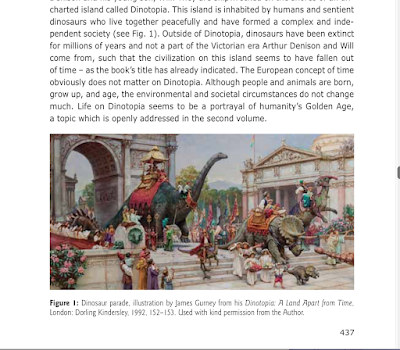


,_1899.jpg)




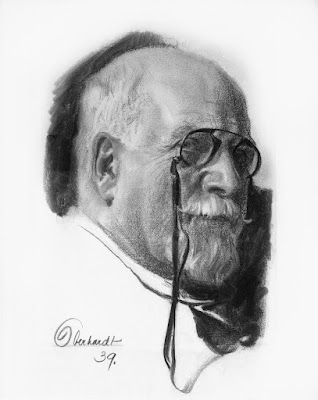










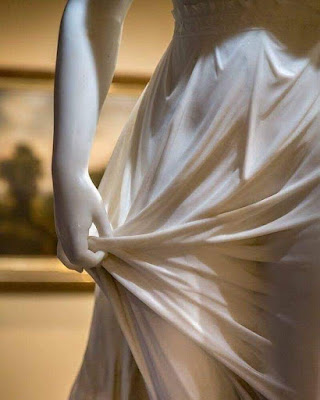



_(14583205298).jpg)



